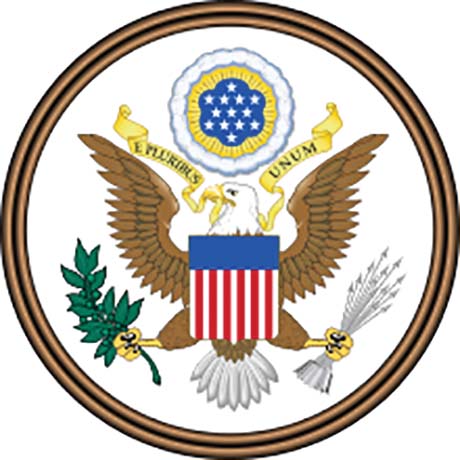by Joseph P. Tartaro | Executive Editor
The slogan on official US documents and American money, “E Pluribus Unum,” is there for a reason. It is a constant reminder that this is one nation that is unified first from many states, from many people of different ethnic and racial origins, and different cultures. The official slogan of the United States also has implications of the oneness of purpose and action which flows from our republican form of government.
For example, while there may be major differences of opinion and philosophies among the political factions in America, when it comes to foreign policy we generally are united in purpose and action—not always, but generally. When the Axis powers plunged peoples everywhere into World War II, many nations formed an Allied front, and what has been called our “Greatest Generation” acted as one. Five years after their victory over the Nazis and Imperial Japan in 1945, Americans played the leading role when the fledgling United Nations took collective action to stop Communist aggression on the Korean Peninsula. While the Korean conflict did not have universal support in the US, our forces were joined with those of many other nations, all acting as one.
 Many people or factions, acting as one for a single purpose, can accomplish much more than individuals or organizations can if guided by different purposes and competitive needs.
Many people or factions, acting as one for a single purpose, can accomplish much more than individuals or organizations can if guided by different purposes and competitive needs.
The most recent example that should always be remembered by American gunowners in defending their Second Amendment rights is the swift, but limited, recent victory of all gunowners over the Obama Administration’s scheme to ban a very common type of 5.56/.223 Remington ammunition as a way of controlling the use and value of popular AR-15 style rifles.
The decision by the Bureau of Alcohol, Tobacco, Firearms and Explosives (ATF) to delay and reexamine their ban proposal for the “green tip” 5.56 cartridge rather than move ahead, without a comment period as they did a year earlier regarding the Russian 7M6-5.45×39 round, is a significant one. The comment period allowed a victory of sorts for all American gunowners brought about by united opposition.
Individuals and organizations can claim responsibility for the ATF pull back, but it was a very clear example of all the opponents acting in concert that caused the ATF to blink.
This was a clear example of grassroots political action in the “e pluribus unum” spirit.
However, the victory is far from complete and far from unconditional. The ATF did not surrender; they only retreated so they could regroup. So, united action will be needed again, probably within the next three to six months.
ATF Director B. Todd Jones told a Senate Appropriations Committee meeting on March 12 that he considers all 5.56 NATO to be a threat to law enforcement officers as more people buy the AR-15-style pistols.
“Any 5.56 round” is “a challenge for officer safety,” he said. Jones asked lawmakers to help in a review of the 1986 Law Enforcement Officers Protection Act (LEOPA), supposedly written to protect police from so-called “cop killer” ammunition. That law largely exempted rifle ammo like the 5.56 because it has been used by target shooters and hunters, not criminals.
ATF now wants to claim that M855 is an “armor-piercing” round according to a new “framework” of the agency’s own design, even though the cartridge has been used in the United States since the 1970s and has never previously met the legal “armor-piercing” definition. The M855 is not considered to be armor-piercing by the military, which stocks a real armor-piercing round that civilians cannot own called the M995. Purely as a matter of performance against humans the M855 is an abysmal failure, which is why it was abandoned by the military for combat, and why it has been sold as surplus training ammunition. Nor has the M855 or any other 5.56/.223 round been used to harm a law enforcement officer in the United States.
The NRA and other gun groups as well as members of both houses of Congress blasted the ATF scheme regarding the M855 as simply the precursor to an attempt to ban all 5.56/.223 Remington ammunition, which would destroy the ammunition market for the most common rifle sold in the United States.
Now Jones has told Congress that all ammunition of that caliber should be classified as “armor-piercing” and banned for civilian use. Truth is, almost any centerfire rifle round is capable of penetrating body armor of the type worn by most law enforcement officers.
The justification given for ATF targeting one particular 5.56/.223 Rem. cartridge is that there are now handguns on the market which fire that round.
These supposed “handguns” are about two-feet long, weigh about six pounds, and currently cost between $1,000 and $2,000. They are not yet common, and even if they were, they are hardly “easily concealed” and not the type of weapon that a criminal would buy or carry.
Anti-gun House Democrats have tried to justify the original ATF ban proposal and are reported “very disappointed” that the ATF delayed the rule. The delayed proposal, they say, is true to the spirit of LEOPA and they still plan further action.
While Jones declined to comment at the hearing on whether his agency might reconsider the bullet ban at a future date, he defended the plan as a “good faith effort.”
Gunowners should be prepared for a renewal of the ammo ban fight, and be prepared for the many concerned with firearms civil rights to act as one—again, and again. Apparently more than 90,000 comments may be required during the remainder of the Obama administration, or a successor president, depending on who wins and what future headlines may blare.





